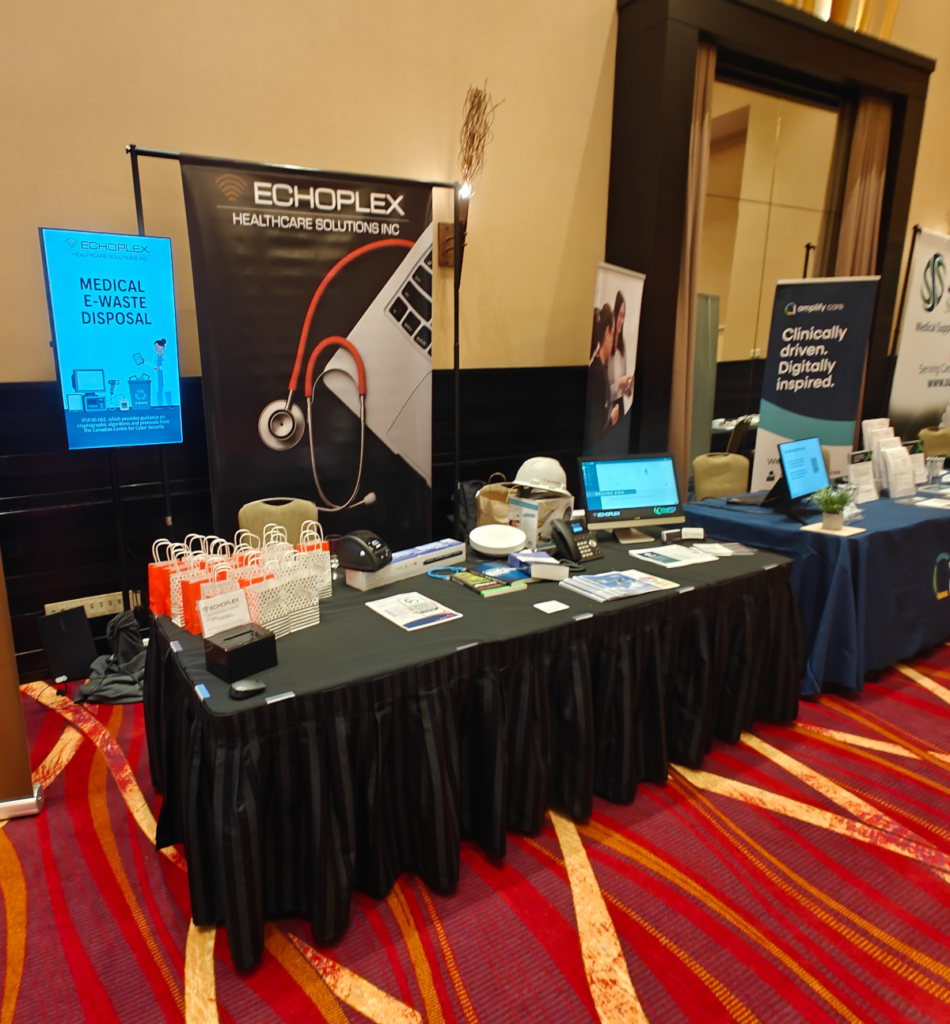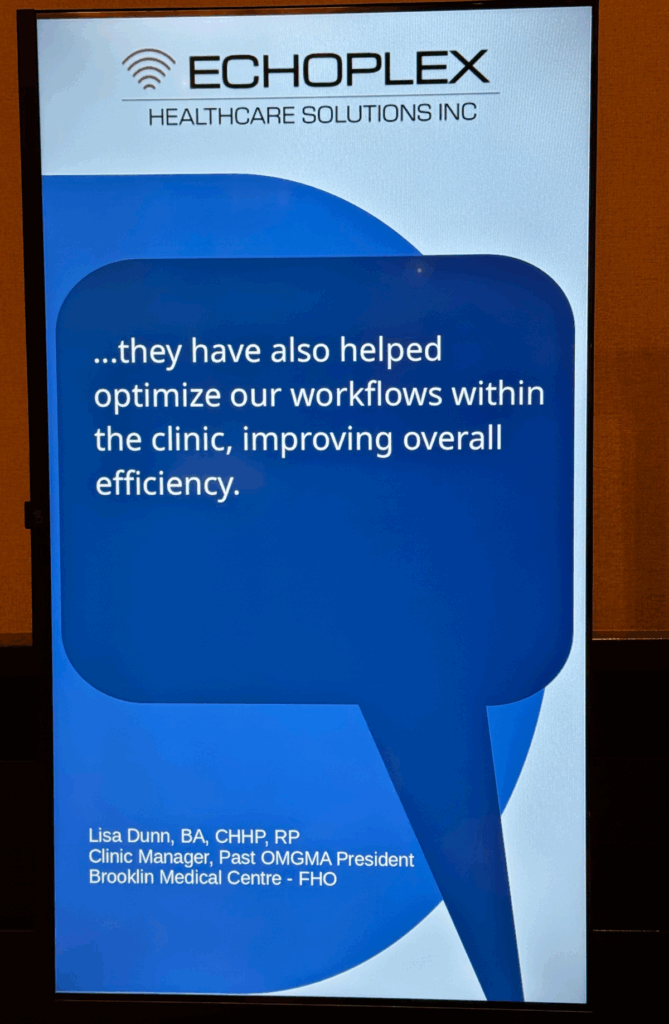Your Trusted Extension for Secure, Compliant Healthcare IT
In today’s healthcare environment, technology is inseparable from patient care—and so is security and compliance. Medical clinics must balance efficiency, reliability, and strict privacy obligations while supporting busy clinical teams. Echoplex Healthcare Solutions provides specialized healthcare IT support that acts as a seamless extension of your clinic staff, delivering enterprise-grade technology management with healthcare-focused security and compliance at its core.
IT Support That Feels In-House—Without the Overhead
Echoplex integrates directly with your clinic’s operations, functioning as your dedicated IT department or as a trusted extension of your existing team. Staff know exactly who to call, issues are resolved quickly, and systems are supported by professionals who understand the realities of clinical workflows.
From front desk to exam room, Echoplex ensures technology supports patient care—not disrupts it.
Built for PHIPA & HIPAA Compliance
Protecting personal health information (PHI) is non-negotiable. Echoplex Healthcare Solutions designs, manages, and supports IT environments with compliance in mind, aligning with PHIPA (Ontario) and HIPAA-style security best practices.
Our compliance-focused approach includes:
- Secure access controls and user authentication
- Encryption of data at rest and in transit
- Audit logging and access monitoring
- Secure email and messaging solutions
- Device management and endpoint security
- Backup, disaster recovery, and business continuity planning
Echoplex works proactively to reduce risk, support regulatory requirements, and help clinics maintain patient trust.
Streamlined, Secure Healthcare Technology
Healthcare IT environments are complex and interconnected. Echoplex simplifies and standardizes your systems while maintaining the highest security standards, including:
- EMR / EHR system support and integrations
- Secure networks and segmented Wi-Fi
- On-premise, cloud, and hybrid infrastructures
- Server, workstation, and medical device support
- Vendor coordination and third-party system oversight
By reducing technical friction and improving reliability, Echoplex helps clinics operate more efficiently and securely every day.
Responsive Help Desk Support for Clinical Teams
When technology issues arise, fast resolution matters. Echoplex provides dependable help desk support tailored specifically to healthcare environments. Staff receive timely, knowledgeable assistance from professionals who understand the urgency and sensitivity of clinical operations.
Whether it’s system access, device issues, or workflow disruptions, support is delivered clearly, calmly, and securely.
Proactive IT Management, Not Just Break-Fix
Echoplex goes beyond reactive support. Through continuous monitoring, preventative maintenance, and strategic planning, we help clinics stay ahead of outages, security threats, and technology obsolescence.
Our goal is long-term stability, predictable costs, and confidence that your IT environment is compliant, secure, and future-ready.
Focus on Patients—We’ll Handle the Technology
By choosing Echoplex Healthcare Solutions, your clinic gains a trusted healthcare IT partner that operates as an extension of your staff—delivering secure, compliant, and reliable technology support without the burden of managing IT internally.
Echoplex Healthcare Solutions
Streamlining Your Workflow with Technology—So You Can Focus on Your Patients.
Echoplex Healthcare Solutions Joins “All Things Menopause” as Gold Sponsor
Paris, Ontario – Echoplex Healthcare Solutions is proud to support the local community as a Gold Sponsor of the upcoming “All Things Menopause” event at the River’s Edge at the Arlington. Bringing together women for an afternoon of conversation, learning, and connection, this event shines a spotlight on all aspects of menopause and women’s health.
The gathering will feature expert speakers, engaging discussions, and opportunities for attendees to share experiences in a welcoming, informative environment. Echoplex is thrilled to play a role in promoting awareness and breaking the stigma around menopause, helping women navigate this important stage of life with confidence and support.

“Supporting initiatives like this is at the heart of what we do,” said the team at Echoplex Healthcare Solutions. “Healthcare isn’t just about technology—it’s about people, education, and community. We’re excited to be part of an event that empowers women and fosters meaningful conversations.”
For more information on the event, visit their Eventbrite Event Page
Echoplex Installs CHIME at the Clinic of Dr. Shiv P. Singh and Dr. Smeeksha Sur
Brampton, Ontario – October 2025
Echoplex Healthcare Solutions is pleased to announce the successful installation of the CHIME Clinic Orchestration Platform at the medical offices of Dr. Shiv P. Singh and Dr. Smeeksha Sur in Brampton, Ontario.
CHIME (chimeclinic.com) is a modern clinical workflow and orchestration solution designed to improve patient flow, enhance staff coordination, and streamline clinic operations. The platform integrates seamlessly with existing EMR systems, helping healthcare teams deliver faster, more organized, and more patient-centered care.
With CHIME now active, the clinic benefits from:
- Faster check-ins with patient self-serve kiosks
- Smarter room management and real-time status displays
- Improved communication through centralized dashboards
- Integrated hybrid workflows for in-person and virtual visits
“Our mission is to help healthcare providers modernize their clinics with practical, reliable technology,” said a spokesperson for Echoplex Healthcare Solutions. “CHIME brings visibility, efficiency, and a smoother experience for both patients and staff.”
Echoplex continues to expand its CHIME deployments across Ontario, helping clinics embrace digital transformation and optimize daily operations with secure, scalable, and integrated solutions.
Learn more about CHIME at chimeclinic.com
Echoplex at the 2025 OMGMA Conference – Building Bridges
Echoplex was proud to participate in the 2025 Ontario Medical Group Management Association (OMGMA) Conference, held September 10–12 at the Casino Rama Resort in Orillia, Ontario. This year’s conference, themed “Building Bridges”, brought together clinic managers, administrators, and healthcare leaders from across the province for three days of collaboration, learning, and strategic exchange.
The event featured expert panels, interactive breakout sessions, and a vendor showcase where we had the opportunity to meet with dedicated healthcare professionals and demonstrate how Echoplex with their digital health solutions support clinics in delivering more efficient, effective, and patient-centered care.
We want to extend a sincere thank you to all the clinic managers, administrators, and attendees who visited our booth. Your time, conversations, and feedback are what make events like this so meaningful. We value the opportunity to connect and to share how technology can make a real difference in the day-to-day operations of healthcare practices.



Door Prize Winner Announcement 🎉
Echoplex is also thrilled to congratulate Kathryn Ward, Primary Care Manager at Peterborough Family Health Team, as the winner of our 2025 OMGMA Conference door prize. Kathryn took home a technologically advanced, high-fidelity smart speaker system that transforms into a full surround-sound experience, along with a collection of office technology tools and IT essentials to support smooth day-to-day operations. We hope these tools will provide both enjoyment and practical value in managing technology needs.
Why Join OMGMA?
We strongly encourage clinic managers and other healthcare leaders to consider joining the Ontario Medical Group Management Association. Membership offers:
- Networking Opportunities – Build connections with healthcare leaders across Ontario, share experiences, and collaborate on solutions to common challenges.
- Professional Development – Access educational resources, workshops, and sessions designed to strengthen leadership and management skills.
- Advocacy and Support – Stay informed about healthcare policy, regulations, and industry trends that directly impact medical group practices.
- Knowledge Sharing – Learn best practices from peers and industry experts to enhance clinic efficiency, improve patient outcomes, and support organizational growth.
Ready to take the next step? Visit the OMGMA membership application page
Moving Forward Together
The 2025 OMGMA Conference was a resounding success, and we are proud to be part of such a vibrant and forward-thinking community. Echoplex remains committed to supporting healthcare leaders with the digital tools they need to streamline operations, empower teams, and provide exceptional care.
We look forward to building on the conversations started at the conference and continuing to work alongside Ontario’s healthcare community to create stronger, more connected systems of care.
Echoplex Healthcare Solutions Excited to Connect at the 2025 OMGMA Conference
Echoplex Healthcare Solutions Inc. is thrilled to be an exhibitor at the prestigious Ontario Medical Group Management Association (OMGMA) annual conference, taking place from September 10 to 12, 2025, at Casino Rama Resort, Orillia, Ontario. This premier event brings together clinic management leaders—OMGMA has 240 members in leadership roles, collectively representing over 3,000 physicians, making it a key opportunity to connect with decision-makers and industry innovators.
What to Expect from Echoplex at OMGMA
At the conference, Echoplex will:
- Reconnect with existing clients, fostering meaningful interactions and exploring continuing paths to enhance their clinical operations.
- Engage with new prospects, showcasing tailored ICT solutions that address the pressing needs of modern healthcare practices.
- Demonstrate products and services, including:
- Helpdesk support for electronic health record integration and software troubleshooting,
- Reliable voice services to ensure seamless patient-staff communication,
- Comprehensive clinic workflow optimization, streamlining tasks to let care providers focus on patient outcomes,
- Showcase products from our partners, highlighting how we help clinics streamline workflow using advanced technology.
This hands-on approach will deliver real value to healthcare leaders seeking efficiency, security, and agility in their clinical operations.
Sincere Thanks to All OMGMA 2025 Conference Supporters
Echoplex extends deep appreciation to all the supporters making this year’s OMGMA conference possible. The event unites innovators, partners, and changemakers in healthcare.
Special thanks to the exhibitors, as highlighted on OMGMA’s supporters page: https://omgma.ca/supporters
Together, these organizations form a vibrant ecosystem driving clinic management forward through innovation and collaboration.
Looking Ahead
Echoplex is genuinely excited to partner with your clinic in making healthcare deliver exceptional patient-centered care, supported by robust, secure, and efficient technology. For attendees visiting our booth, expect engaging conversations and demonstrations tailored to your clinic’s unique needs.
Thank you once again to OMGMA and all its supporters for fostering a space where collaboration, leadership, and innovation thrive. We can’t wait to see you at Casino Rama Resort, Orillia, from September 10–12, 2025!